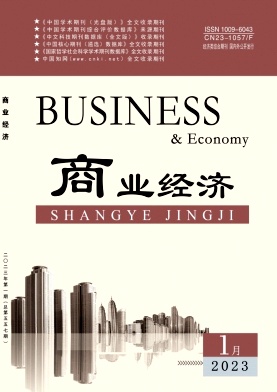土地财政对城市土地利用效率的影响——基于空间计量模型的实证分析
原文服务方:
商业经济
摘要:
The Global-Malmquist index based on SBM super efficiency model was used to measure the land use efficiency of 26 cities in the Yangtze River Delta, and the impact of land finance on land use efficiency was analyzed by the Spatial Dubin model. It is found that, firstly, urban land use efficiency in the Yangtze River Delta presents a stable development trend, with a relatively high overall efficiency level and spatial agglomeration characteristics. Secondly, land finance has a statistically significant negative impact on land use efficiency. Thirdly, the mechanism test shows that the negative impact of land finance on urban land use efficiency is mainly realized by inhibiting technological progress.

推荐文章
江苏省城市土地利用效率评价
城市土地
利用效率
超效率SBM模型
江苏省
基于微观空间单元的景观城市化水平对土地利用变化的影响
景观城市化水平
土地利用变化
微观空间单元
深圳
科技创新对城市土地利用效率的影响 ———基于金融集聚与产业结构作用机制分析
超效率SBM模型
调节效应
门槛效应
中介效应
金融集聚
城市土地利用效率
多约束背景下广西城市土地利用效率及变化分析
广西
土地利用
DEA模型
Malmquist指数
内容分析
关键词云
关键词热度
相关文献总数
(/次)
(/年)
版权信息
全文
- 全文.pdf
引文网络
引文网络
二级参考文献 (0)
共引文献 (0)
参考文献 (0)
节点文献
引证文献 (0)
同被引文献 (0)
二级引证文献 (0)
2023(0)
- 参考文献(0)
- 二级参考文献(0)
- 引证文献(0)
- 二级引证文献(0)
研究主题发展历程
节点文献
土地财政
土地利用效率
空间杜宾模型
研究起点
研究来源
研究分支
研究去脉
引文网络交叉学科
相关学者/机构
期刊影响力
商业经济
主办单位:
黑龙江省商业经济研究所
出版周期:
月刊
ISSN:
ISSN 1009-6043
CN:
CN23-1057 /F
开本:
16开
出版地:
黑龙江省哈尔滨市南岗区革新街165号
邮发代号:
创刊时间:
1982-12-01
语种:
中文
出版文献量(篇)
12
总下载数(次)
0
总被引数(次)
0
期刊文献
相关文献
推荐文献
- 期刊分类
- 期刊(年)
- 期刊(期)
- 期刊推荐

 免费查重
免费查重










